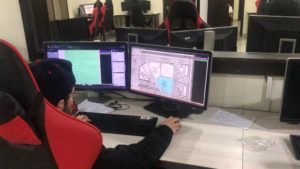
Tendering Assistance / Bid Solicitation
When looking for RFPs you will come to find out that a large percentage come from IT/hardware, lab equipment, telecommunications, furniture, and last but definitely not least, construction. Construction is right up there with IT and medical RFPs as far as how many of them are on the market. The variety of construction projects to be procured is vast and hit all fields within the construction industry. Local RFPs for your area of work will be abundant, and federal RFPs within the construction industry will provide your business with as many opportunities as it can handle. Construction is one of the single best industries to be within if you are looking to competitively bid. Before entering the construction bidding process make sure to read through this blog and familiarize yourself with some common terms and processes that are routine within these types of bids.
First off, when an agency wants to procure a construction service or product they will release a bid solicitation to the market. This solicitation is public and provided to whoever wishes to start bidding on the project. This is where bidding can become very competitive, as it is public information and available to as many construction firms and contractors who wish to win the bid.
Many of these construction bids will not only be released to the public, but also sent to specific groups of contractors, general contractors, and subcontractors. The contractors who receive these solicitations specifically, can assume that their services are favored, in which they may have already performed a service or sold items to the soliciting agency in the past. Do not let this process detour you from submitting a bid to the soliciting agency. Submitting bids is a good thing, and in most cases will only help you publicize your businesses name and possibly win you a bid in to the future with an agency who at one time may have not been interested in procuring services or products from you.
Material Takeoffs and Bill of Quantities

A detailed measurement of materials and labor required to complete a construction project is known as quantity takeoff. We have a team of well-experienced estimators who can do quantity takeoff by reviewing drawings and specifications. We specialize in material takeoffs and quantity surveys for both labor and materials. We do takeoffs from digital plans or hard copy blueprints. We count every material item required to build any size construction project.
BOQ shall be used in every phase (pre-contract & post-contract) of the project but the need of BOQ differs based on different contract agreements & project. Our quantity estimators provide various services including preparing cost estimates and plans, auditing projects, managing construction costs and administering construction contracts for all types and levels of construction. They also check on changes of design to assess the cost effects.
Scheduling and CPM

The critical path method (CPM) is a popular scheduling technique in the construction industry due to its simplicity and effectiveness. It generates a graphical view of a project and calculates how much time and resources are required to complete each activity. It also determines critical activities requiring attention so that the project can be completed on time.
A CPM lists all activities in a project and includes information about how long each activity will take and how each relates to the completion of other activities.
